Formula C6H12O3 Boiling point 124.4 °C | Density 996 kg/m³ CAS ID 123-63-7 | |
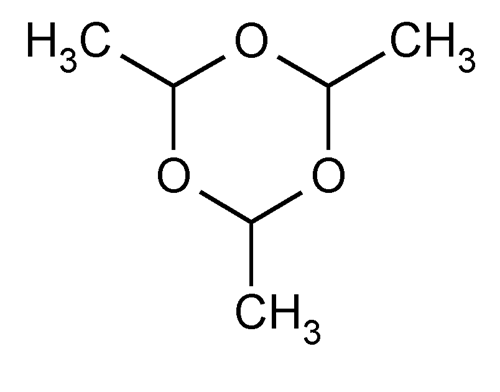 | ||
Paraldehyde is the cyclic trimer of acetaldehyde molecules. Formally, it is a derivative of 1,3,5-trioxane. The corresponding tetramer is metaldehyde. A colourless liquid, it is sparingly soluble in water and highly soluble in ethanol. Paraldehyde slowly oxidizes in air, turning brown and producing an odour of acetic acid. It quickly reacts with most plastics and rubber.
Contents
- Stereochemistry
- Reactions
- Medical applications
- As a hypnoticsedative
- As anti seizure
- Administration
- Industrial applications
- References
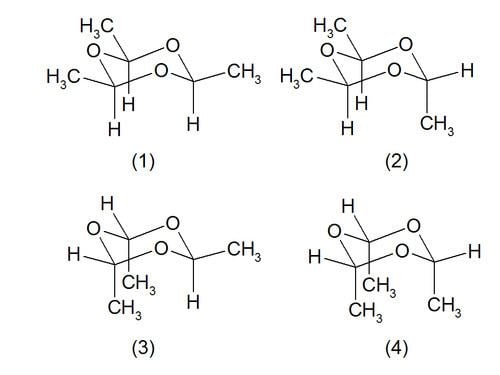
Paraldehyde was first observed in 1835 by the German chemist Justus Liebig ; its empirical formula was determined in 1838 by Liebig's student Hermann Fehling. Paraldehyde was first synthesized in 1848 by the German chemist Valentin Hermann Weidenbusch (1821–1893), another student of Liebig ; he obtained paraldehyde by treating acetaldehyde with acid (either sulfuric or nitric acid). It has uses in industry and medicine.
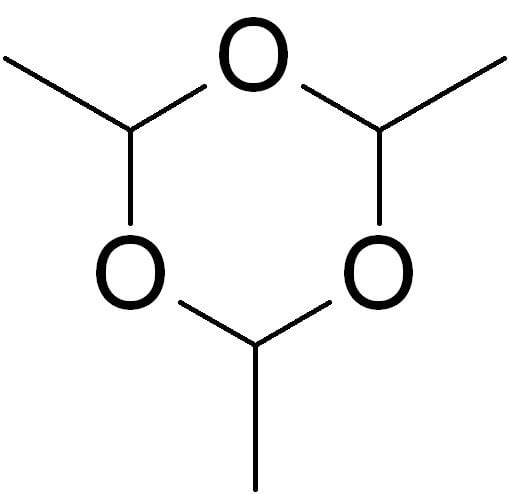
Stereochemistry
Theoretically, four stereoisomeric structures are possible. The structures (1) and (2) are known as cis- and trans-paraldehyde. The structures (3) (a conformer of (2)) and (4) (a conformer of (1)) don't exist for steric reasons.
Reactions
Heated with catalytic amounts of acid, it depolymerizes back to acetaldehyde:
C3H12O3 → 3CH3CHO
Since paraldehyde has better handling characteristics, it may be used indirectly or directly as a synthetic equivalent of anhydrous acetaldehyde (b.p. 20 °C). For example, it is used as-is in the synthesis of bromal (tribromoacetaldehyde):
C3H12O3 + 9 Br2 → 3 CBr3CHO + 9 HBrMedical applications
Paraldehyde was introduced into clinical practice in the UK by the Italian physician Vincenzo Cervello (1854–1918) in 1882.
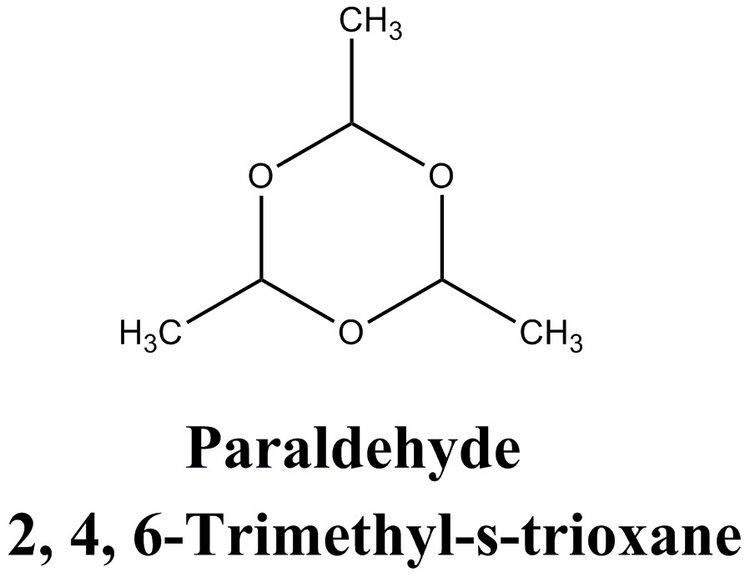
It is a central nervous system depressant and was soon found to be an effective anticonvulsant, hypnotic and sedative. It was included in some cough medicines as an expectorant (though there is no known mechanism for this function beyond the placebo effect).
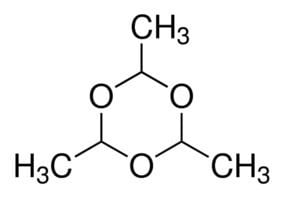
Paraldehyde was the last injection given to Edith Alice Morrell in 1950 by the suspected serial killer John Bodkin Adams. He was tried for her murder but acquitted.
As a hypnotic/sedative
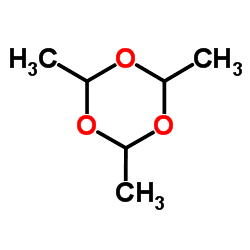
It was commonly used to induce sleep in sufferers from delirium tremens but has been replaced by other drugs in this regard. It is one of the safest hypnotics and was regularly given at bedtime in psychiatric hospitals and geriatric wards up to the 1960s. Up to 30% of the dose is excreted via the lungs (the rest via the liver). This contributes to a strong unpleasant odour on the breath.
As anti-seizure
It has been used in the treatment of convulsions.

Today, paraldehyde is sometimes used to treat status epilepticus. Unlike diazepam and other benzodiazepines, it does not suppress breathing at therapeutic doses and so is safer when no resuscitation facilities exist or when the patient's breathing is already compromised. This makes it a useful emergency medication for parents and other caretakers of children with epilepsy. Since the dose margin between the anticonvulsant and hypnotic effect is small, paraldehyde treatment usually results in sleep.
Administration
Generic paraldehyde is available in 5 mL sealed glass ampoules. Production in the US has been discontinued, but it was previously marketed as Paral.
Paraldehyde has been given orally, rectally, intravenously and by intramuscular injection. It reacts with rubber and plastic which limits the time it may safely be kept in contact with some syringes or tubing before administration.
Industrial applications
Paraldehyde is used in resin manufacture, as a preservative, MEP and in other processes as a solvent.
It has been used in the generation of aldehyde fuchsin.
